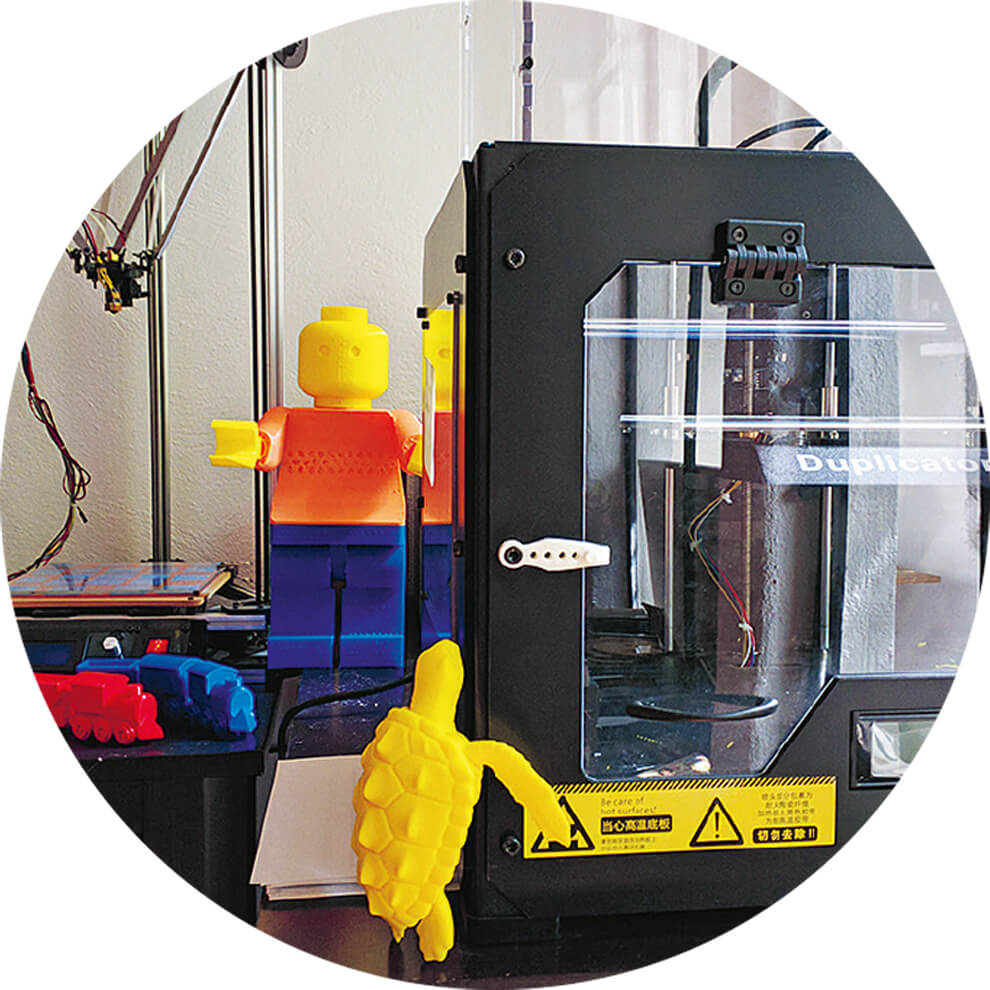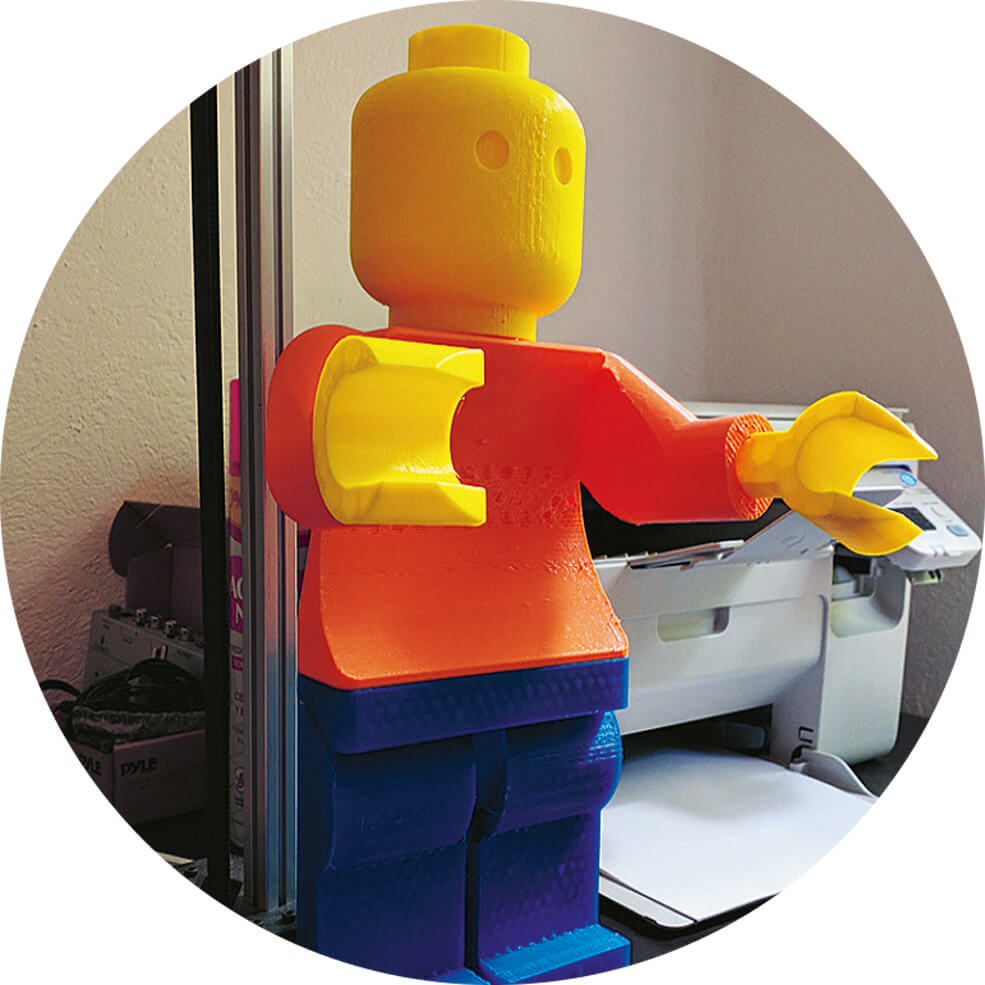
Printing the future
3D printing is about to revolutionize production. It’s already being used in many different areas, from the car industry to medical treatment. It lowers costs and reduces production time dramatically. And if you keep a printer at home – you can always deliver toys to your kids.
Just when my son was born and I was spending my 15 days of parental leave at home with my family, I managed to disconnect from work e-mails and communication, and spent those little bits of free time looking for new exciting topics and technologies on the Internet.
That’s how I ended up backing a “low cost” 3D printer on Kickstarter, which was supposed to be delivered around Christmas. The official excuse I used to reduce friction with my beloved wife was that I was going to be able to print a lot of special toys for our new kid.
Believe it or not, that’s what my printers are doing most of the time even today: printing toys for my son, an almost three year-old kid who has already understood the concept of 3D printing. To him it’s a completely natural thing: he was born with a 3D printer in his house and can come up to me and ask “Print me a unicorn” the same way he could ask for a drawing or a glass of water.
Expertise and Patience
Having a 3D printer at home today is similar to having been a happy owner of a PC with dialup internet connection in the early 90s or an internet enabled phone before Apple launched the first Iphone in 2007. It’s still mostly a technology for early adopters, at least in the consumer space. Operating a desktop 3D printer today requires a certain amount of expertise and a whole lot of patience. Reliability is not there yet, and having to take apart some parts of you 3D printers to fix a “clog” is a relatively common task. But 3D printing as a technology, especially in industrial form, is becoming so pervasive that it’s starting to get hard finding domains where it has not been exploited yet. Out of all these new fields of application, there are some, where we’re starting to see the real potential.
Historically the cost of producing physical goods has been extremely high. Both in terms of gaining access to the expensive industrial machinery and because of the incremental cost for each and every change required during the prototyping phase.
The latter point is extremely relevant, since the typical lead time for injection molding, the traditional technique used to produce plastic parts, is known to be between 15 and 60 days. The use of 3D printing can reduce the lead time to a max of 2-3 days when using an on demand printing service and even down to a few hours when you own your own printer.
The cost is constant
On the cost side, things are also very interesting. Injection molding has a fixed ramp-up cost that makes it very expensive to print one single piece. This cost typically includes the cost of producing the mold, which makes it a suitable process when producing goods at scale. When using 3D printing instead, the cost of producing a unit is constant since the setup is pure software and the plastic filament used for every unit is basically the same.
The automotive industry has been one of the early adopters of 3D printing since the early nineties, when companies such as Land Rover were already using it to speed up the whole R&D process.
Today almost every automotive company is investing heavily in 3D printing and we have seen the rise of new concepts such as the Local Motors, ones that are likely to do to the car’s body and structure what Elon Musk’s Tesla is doing to the car’s engine: shifting to a completely new paradigm.
Local Motors is focusing on coupling the traditional manufacturing process for the car’s drive train with a completely new approach to producing the structure and the body of the car: 3D printing. This allows for a distributed network of mini factories compared to the more traditional and expensive huge plants that the car industry has traditionally been using, as well as a declared lead time of 44 hours for a new car.
This concept is still in its early stages, but it seems obvious that it will have a huge impact on how the car industry will be approaching manufacturing in the future.
The application of 3D printing in medicine is a reality and probably way beyond what most of us would believe. The realities is that today we’re not just able to print plastic, but also a wide range of more exotic materials such as tissue with blood vessels, ceramic that can be used to foster bone growth, muscle cells, ear cartilage, skull replacement parts, and even organs.
Even though most of these materials are still in a very early stage of development, ranging from being at the research stage in medical universities, to having been successfully used within a small set of human patients, chances are that the technology will allow even better medical treatments for what could be a very affordable price almost everywhere in the world.
This will open up opportunities for futuristic scenarios where a person could take a scan of a broken bone, upload it to a web site and get a custom made replacement bone shipped at his own address in a matter of days.
3D-printing will also generally produce less waste than the more traditional subtractive manufacturing, due to the fact that the amount of material needed in order to build a product using additive manufacturing is exactly the amount required for the product itself.
Another important aspect is the ability to recycle. Today there is a vast variety of materials that can be 3D-printed, some of them are not recyclable, but there are already a whole lot of alternatives that are becoming more and more apt to being recycled.
Tip of the iceberg
All these examples are just the tip of the iceberg of what is expected to become possible or even the norm thanks to broadening the access to 3D printing technology, especially in countries or areas where typically production costs have been so high that little to no innovation was considered possible.
Thanks to its ability to reduce production costs and lead time coupled with an extreme flexibility when it comes to what is possible to produce through 3D printing, we should really expect this technology and technique to become more and more pervasive every day, even though it will probably not mean that we’ll have a 3D printer in every home as it happened with the first PC revolution.

